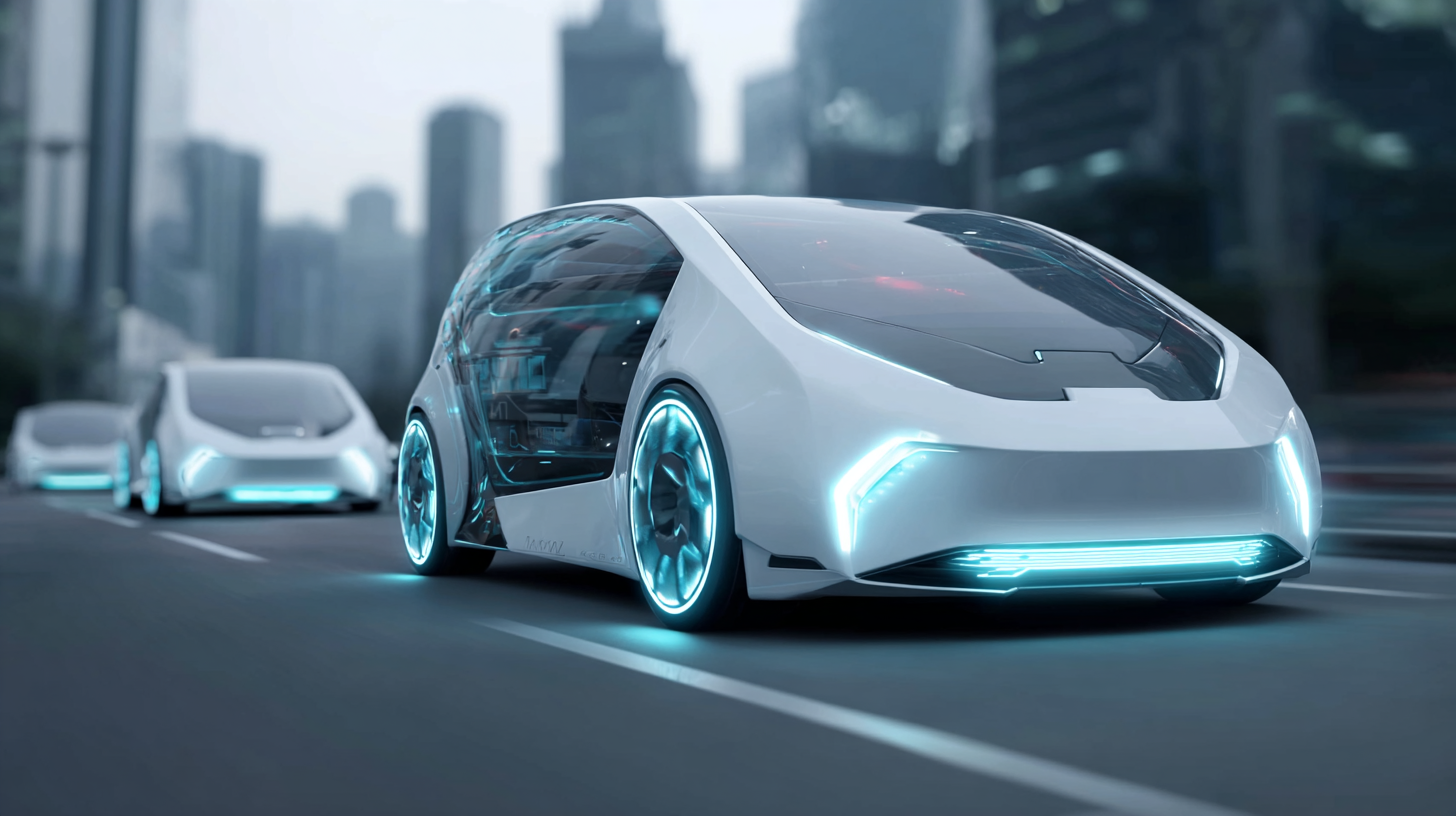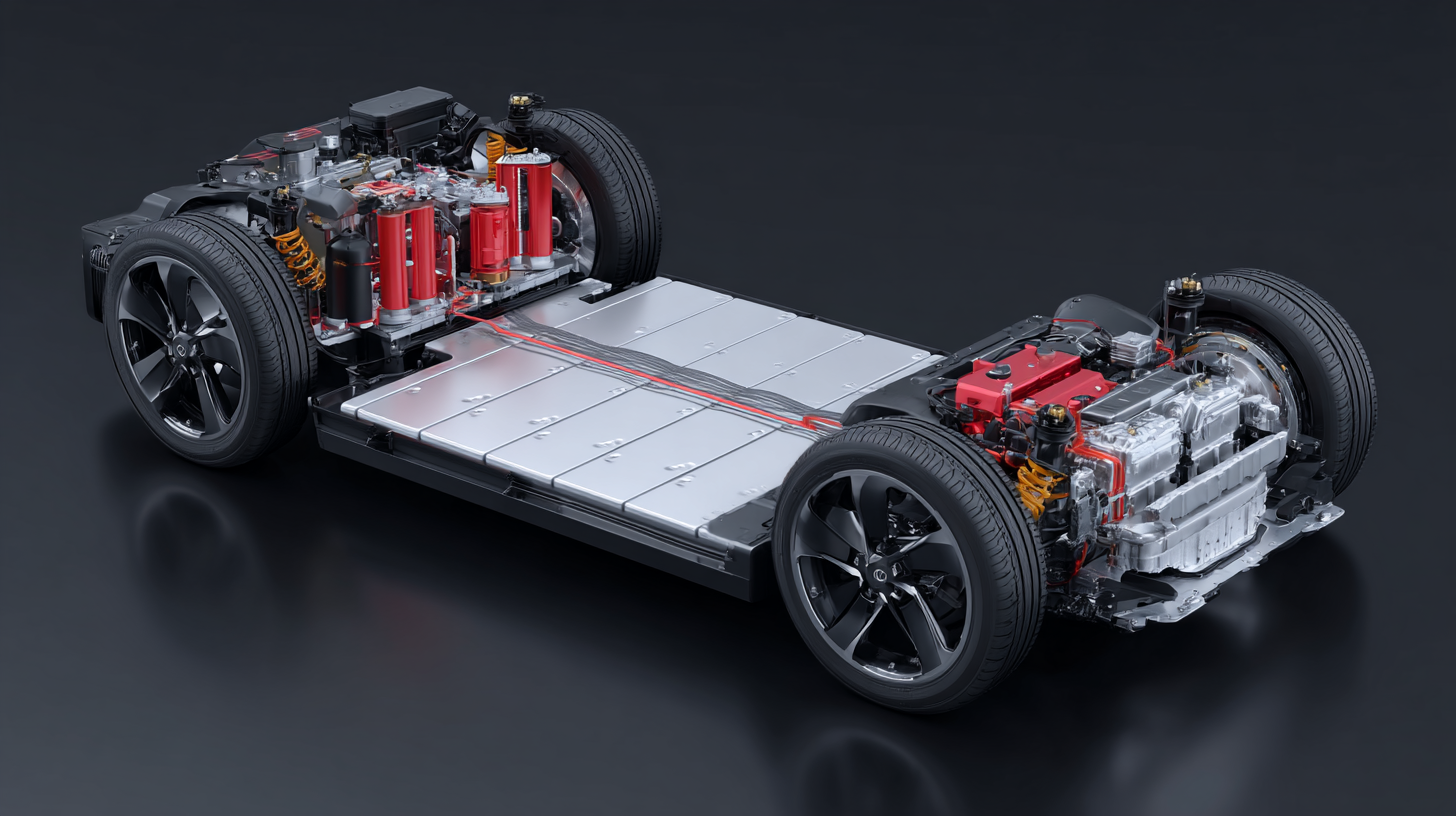As the world grapples with the pressing need for sustainable transportation solutions, the rise of battery cars has emerged as an essential focal point in the transition towards greener alternatives. According to a report by the International Energy Agency (IEA), the global electric car stock surpassed 10 million units in 2020, marking a significant 43% increase from the previous year. This surge in adoption highlights the growing consumer awareness and government policies encouraging the shift from traditional internal combustion engines to battery-powered vehicles.

As we look to the future, understanding the broader implications of this shift will be crucial for policymakers, manufacturers, and consumers alike.
The market for battery electric vehicles (BEVs) has experienced substantial growth in recent years, driven by advancements in technology and increasing environmental awareness. Statistics reveal that global sales of BEVs surged, with over 5 million units sold in 2021 alone, marking a 100% increase from the previous year. Major automotive manufacturers are expanding their electric offerings, acknowledging a shift in consumer preferences towards more sustainable transportation options. Countries worldwide are setting ambitious targets to phase out internal combustion engines, further accelerating the adoption of battery electric vehicles.

The trend of increasing market share for battery electric vehicles is also supported by the development of charging infrastructure. Investments in public and private charging stations are making it more convenient for consumers to transition to electric vehicles, alleviating concerns about range anxiety. Moreover, governments are offering incentives, such as tax rebates and subsidies, to encourage purchases of BEVs. As awareness of climate change grows, the demand for battery electric vehicles is expected to continue rising, potentially leading to a paradigm shift in the transportation landscape and significant reductions in greenhouse gas emissions.
The rise of battery electric vehicles (BEVs) is transforming the transportation landscape, with significant implications for environmental sustainability. According to the International Energy Agency (IEA), the global market for electric cars surpassed 10 million units in 2020, a figure projected to grow exponentially. The shift to battery cars can lead to substantial reductions in greenhouse gas emissions. A report by the Union of Concerned Scientists indicates that BEVs produce, on average, 60% fewer carbon emissions than traditional gasoline vehicles over their lifetime, even when accounting for the emissions from electricity generation.
In addition to lowering carbon emissions, battery cars contribute to improved air quality. The California Air Resources Board estimates that transitioning to electric vehicles can prevent over 1.5 million tons of nitrogen oxides and particulate matter from entering the atmosphere each year. These reductions translate into significant public health benefits, potentially avoiding thousands of premature deaths related to air pollution. As governments worldwide implement stricter emissions regulations and incentives for electric vehicle adoption, the environmental advantages of battery cars will become increasingly evident, positioning them as a cornerstone of future transportation efforts.
| Year | Battery Cars Sold (Millions) | CO2 Emissions Reduced (Million Tons) | Percentage of Total Vehicle Emissions | Renewable Energy Usage (%) |
|---|---|---|---|---|
| 2020 | 3.2 | 30 | 2% | 25% |
| 2021 | 4.6 | 45 | 3% | 30% |
| 2022 | 6.5 | 75 | 5% | 35% |
| 2023 | 8.0 | 100 | 7% | 40% |
| 2024 (Projected) | 10.5 | 130 | 10% | 50% |
The burgeoning market for vehicle-to-home (V2H) power systems is projected to reach $93.58 million in 2024 and an impressive $532.59 million by 2032, with a compound annual growth rate of 24.28%. Despite the increasing sales of electric vehicles (EVs) in the U.S., the lack of charging infrastructure remains a significant barrier to widespread adoption. To address this, innovative strategies and solutions are paramount.
Tips: To enhance your experience as an EV driver, consider investing in home charging solutions that utilize V2H technology. This not only allows for easier charging but can also help in managing energy consumption more effectively.
Moreover, collaboration between companies is vital for overcoming the challenges associated with EV charging. Establishing partnerships for infrastructure development can significantly expedite the rollout of charging stations, thus alleviating driver frustrations.
As countries like Nigeria formulate policies for cleaner transportation, the emphasis on deploying CNG and electric buses signifies a global shift towards more sustainable practices. This transition highlights the urgent need for robust infrastructure that will support the increasing demand for electric vehicles.
The transition to battery cars represents a transformative shift within the transportation sector, and government policies play a pivotal role in this evolution. By implementing incentives such as tax credits, rebates, and grants, governments can significantly reduce the financial burden on consumers and manufacturers alike. These financial incentives encourage the adoption of electric vehicles (EVs) by making them more affordable, spurring demand, and facilitating the expansion of charging infrastructure. Moreover, regulatory frameworks that establish emissions targets and fuel efficiency standards drive automakers to innovate and invest in battery technology, thus accelerating the development of cleaner vehicles.
Data-driven policies further enhance this transition, allowing governments to make informed decisions based on market trends and consumer behavior. By analyzing data related to electric vehicle usage, charging patterns, and environmental impacts, policymakers can identify successful strategies and areas needing improvement. Furthermore, fostering partnerships with private sectors, such as utility companies and automotive manufacturers, enables a coordinated approach to address the challenges of integrating battery cars into the existing infrastructure. Ultimately, strong and strategic governmental support is essential for achieving a sustainable transportation future, where battery cars can thrive and contribute to environmental preservation.

As battery technology continues to evolve, its influence on transportation emissions is projected to be transformative by 2030. Enhanced energy density, faster charging times, and improved battery lifespans are pivotal advancements that will drive the adoption of battery-powered vehicles. By reducing reliance on fossil fuels, these innovations not only promise to lower carbon emissions but also contribute to cleaner urban air quality. With projections indicating a significant increase in electric vehicle market share, cities may witness a shift toward sustainable public transport options, further reducing greenhouse gas emissions.
Tips: To stay ahead in this changing landscape, consider investing in electric vehicles, which are becoming increasingly cost-effective. Additionally, support local policies that promote electric charging infrastructure to facilitate the transition to battery cars. It's also worthwhile to stay informed about battery recycling programs to ensure that old batteries are disposed of responsibly, minimizing environmental impact.
The future of transportation will hinge on smarter battery technologies that integrate renewable energy. Innovations such as solid-state batteries and fast-charging capabilities are expected to enhance the appeal of electric vehicles, thereby accelerating emissions reductions. As manufacturers scale production and costs decline, consumers can expect a wider range of eco-friendly options that align with their environmental values. By prioritizing sustainability in transport choices, individuals can actively contribute to a greener future.
Tips: Keep an eye on government incentives that support electric vehicle purchases, which can help offset initial costs. Participating in community initiatives focused on sustainable transportation can also amplify the impact of individual choices.






